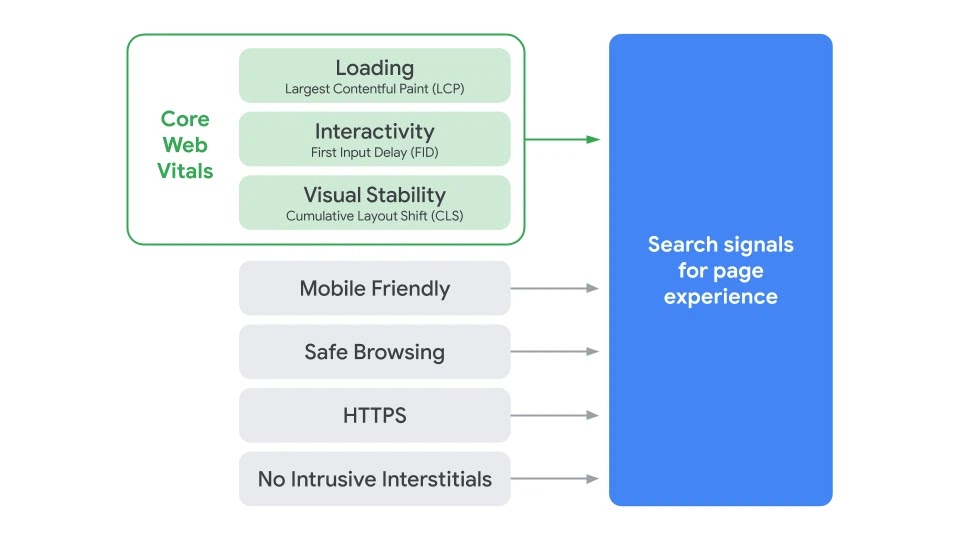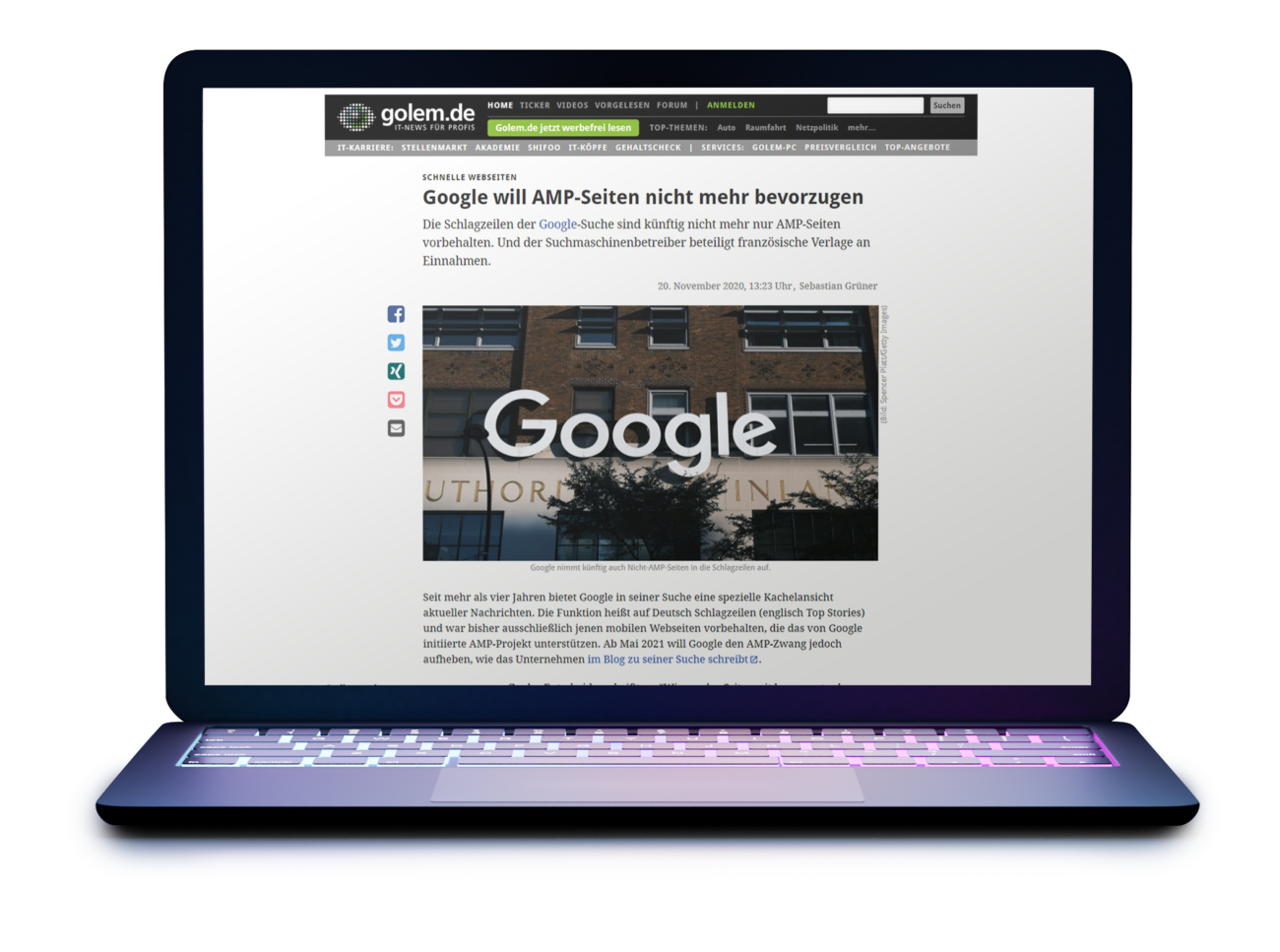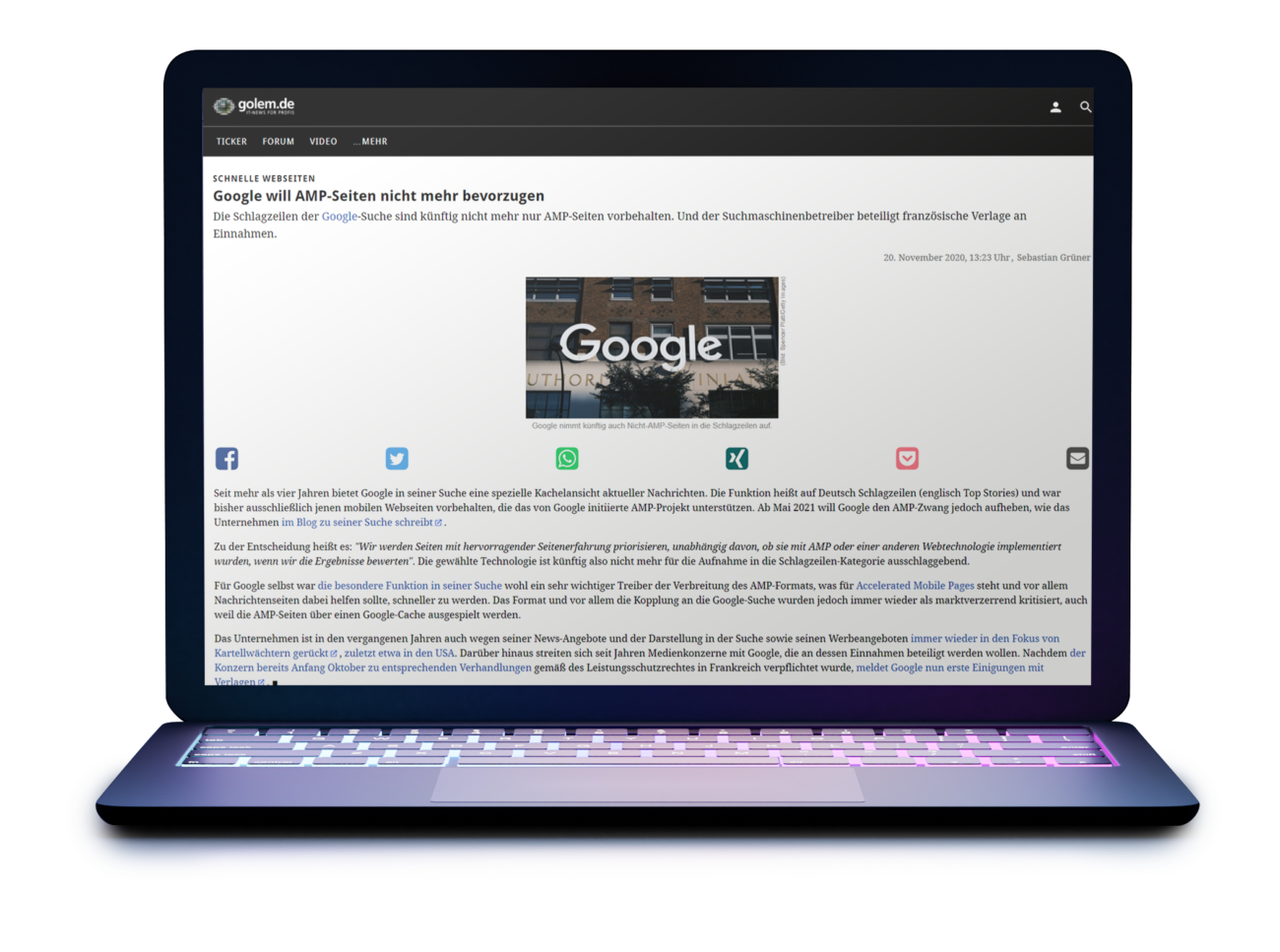Without serious competition in the search engine market, Google must innovate without competitors. Google is constantly putting itself under pressure: Without serious competition in the search engine market, Google has to innovate without competitors – because at the same time, social networks like Facebook prefer to keep their users with them. The more user-friendly the use of Google and the better the results, the more Google will continue to be used for research. In addition to recommendations (links) from other websites, Google was particularly interested in the content – and the technical quality of a website. This could be measured particularly easily, e.B. by their speed at the time of delivery. For this purpose, Google introduced the PageSpeed score in 2009 and has been constantly developing it ever since. For webmasters, this is a great way to improve the user experience, because the faster the website is delivered, the more satisfied the visitor will be. Google Amp was introduced 6 years later, i.e. in 2015, because Google apparently wasn’t moving fast enough with PageSpeed optimization of websites. In contrast to our PageSpeed 100 WordPress Theme, many websites are still rather poorly optimized in terms of performance, and subsequent optimization is only possible with cutbacks in many cases. For many website operators, however, a technical relaunch is out of the question for budget reasons. Google Amp should offer a compromise: a mobile & performance-optimized variant of an otherwise poorly optimizing website.
The idea
The idea: Less is more
Google Amp is an alternative standard and limits the standards adopted by Internet bodies such as W3C in order to deliver a slimmed-down, mobile-optimized version of a website, especially news articles. Complex Javascript, tracking or ads were prevented or restricted, as well as complex styles via CSS or integration of third-party services – all this defined in the AMP HTML Standard, a separate selection of HTML tags within the Amp cosmos.
In the past, the original technology standard was rarely the problem, but the (often misappropriated) use by the website operators.
Amp pages therefore offer much less possibilities for the website operator and the visitor, in case of doubt, a wooden hammer method for the fastest possible delivery. Basically a Web Light.
The restrictive standard also allows Google to cache the individual pages very easily and deliver them in an accelerated manner – so that they are delivered even faster. Google was therefore relatively sure that an amp page would deliver quickly and made the use of Amp a prerequisite to appear in the top stories of Google News.
So any news site that didn’t want to give up the traffic of Google News had to support Amp.
The Amp versions were available as an alternative version at their own address and had to be technically maintained as a separate output of the page.
So instead of motivating the webmasters to structurally speed up their lame websites, a light variant was declared mandatory, which in some cases could be as complex as a technical relaunch of the actual website.
Even if the website owner now has a website with PageSpeed 100, fully responsive for any resolution – Google News remains denied to him as long as Google Amp is not additionally supported.
As if a housebuilder were required to provide a roof for sun, rain and snow, depending on the weather conditions, instead of accepting one made of a material that can withstand all conditions.
You would have liked Google to accept websites with a PageSpeed 80+ or 90+ for the Google News Top Stories.
It then often happens that a mobile user lands on the amp version of a website and, for example, shares this link with friends or colleagues who then open the mobile amp version on their desktop PC – user-friendly is different. The whole thing is reminiscent of websites that deliver a separate mobile version in addition to a desktop version instead of Responsive optimization for every resolution – Web 1.0.
Goals instead of targets
Amp vs Core Web Vitals

Google has now greatly improved its ability to evaluate and optimize websites – user experience is measured beyond just page load time, for example, whether there are layout shifts when loading or how the perceived loading times are for a user (visible content is loaded first) or whether the real loading times are particularly high (simulating a page request instead of using a text-only browser).
The Core Web Vitals summarize several Key Performance Indicators (KPIs) that allow you to check website quality and improve it based on concrete best practices. So instead of dictating certain restrictive standards of its own to users, Google just sets the goal – usually without prescribing any particular technology.
Beautiful, individual and fast websites are thus rewarded and investments are more likely to pay off – in the end, the user who is thus more likely to receive the best answer to his search query from Google wins – regardless of the specific technology used on the website. For the user, it simply doesn’t matter whether a website is delivered particularly quickly via the Google CDN or another CDN – the main thing is that it’s fast.
As of May 2021, the spook with Google Amp is over: Websites with poor basic structure will continue to use Amp to get listed in Google News Top Stories – websites with PageSpeed optimized structure will hardly be able to justify efforts for Amp – the time is better invested in further optimization of the website’s main structure than in an additional Amp version.


